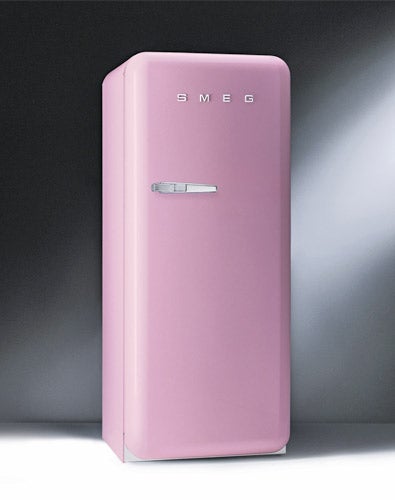The Secret History Of: The Smeg fridge

Your support helps us to tell the story
From reproductive rights to climate change to Big Tech, The Independent is on the ground when the story is developing. Whether it's investigating the financials of Elon Musk's pro-Trump PAC or producing our latest documentary, 'The A Word', which shines a light on the American women fighting for reproductive rights, we know how important it is to parse out the facts from the messaging.
At such a critical moment in US history, we need reporters on the ground. Your donation allows us to keep sending journalists to speak to both sides of the story.
The Independent is trusted by Americans across the entire political spectrum. And unlike many other quality news outlets, we choose not to lock Americans out of our reporting and analysis with paywalls. We believe quality journalism should be available to everyone, paid for by those who can afford it.
Your support makes all the difference.Wallace and Gromit have a SMUG fridge in their kitchen. There's also one in EastEnders, a show not usually noted for interior design. But despite the gentle ribbing, the Smeg fridge is still an object of desire for many and is, without a doubt, a modern design classic.
So widely recognised is it that it has been referred to as the Hollywood star of the appliance world, and the company has collaborated with Mini cars and the Barcelona football team to produce limited editions, as well as using the England and Union Jack flags. It seems inevitable that there will be a version with the Olympic rings on it.
Smeg was set up in 1948 by Vittorio Bertazzoni at the Smalterie Metallurgiche Emiliane Guastalla (metal enamelling factory) in the village of Guastalla, Reggia Emilia, in Italy, and remains in the family to this day.
It started making enamel casings for ovens produced by other manufacturers and eventually decided to create its own products. Joan Fraser, product development manager of Smeg, says: "The first Smeg cooker was launched in 1956 and called Elizabeth. They felt that by giving it a name it would be more than just an object in the kitchen.
"The next product was a washing machine which was a front loader and this is where they really showed how innovative they were. At the time most washing machines were twin tubs or top loaders but Smeg wanted to show it was cutting edge."
In the 1970s, Smeg produced the biggest dishwasher – 14 place settings – and the following decade it tapped into the Yuppie zeitgeist when it launched the first built-in cooker and split-level hob in Europe.
"During the 1980s, Smeg was the brand to have and it made minimal stainless steel products that fitted the mood of the time perfectly," says Fraser. "But they were always ahead of the trends and they knew that that look wouldn't last so they wanted to come up with something new that would also make a statement."
That statement was FAB, a soft curvy retro-looking fridge that wouldn't have looked out of place next to Elizabeth. It was launched in soft 50s pastels as well as red and cream.
It was an immediate success despite its large size making it tricky to slot into most kitchens.
The FAB range continues to grow and despite the most recent colour launches of white and velvet black, cream is still the most popular colour.
Join our commenting forum
Join thought-provoking conversations, follow other Independent readers and see their replies
Comments